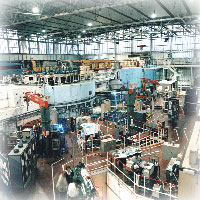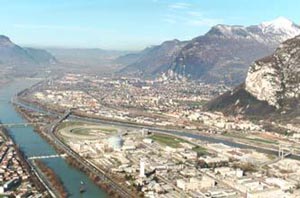£100 million has been earmarked for a new science project in the UK. However, while welcomed by the community, setting aside the money for the extension to the neutron facility in Oxfordshire does draw a line under plans for a much bigger European project.
In April, the UK’s Science Minister, Lord Sainsbury, announced one of the largest government awards for a single science project to the neutron centre at the Rutherford Appleton Laboratory, near Didcot, Oxfordshire. The Department of Trade & Industry (DTI) will hand over £100 million ($138m) to fund a brand new wing at the ISIS neutron laboratory. The new wing will help scientists in their search for everything from super-fast computers and data storage devices to sensors and novel pharmaceuticals and drug-delivery materials.

Lord Sainsbury
The current neutron facility, or ‘target station’, at ISIS is the most powerful neutron producer of its kind in the world. Scientists have used it in research on many diverse problems, exploiting the neutron’s ability to probe the inner workings of matter. They have revealed much about the structure and dynamics of matter. Some 1600 scientists from around the world and from almost every discipline find it useful from physicists and chemists to biotechnology researchers and materials scientists by way of environmental scientists and engineers.
Among the materials that can be studied using neutrons are polymers and soft matter, colloids and composites, disordered materials, such as glasses and liquids studies that are important for optical communication devices, chemical and biochemical engineering, food sciences, pharmaceutical and molecular biology. Structural chemists can use neutrons to better understand chemical activity and molecular motion. But, the current facility is now fully developed and cannot expand to meet the increasing demands of the scientific community, hence the need for a second target station.

ISIS facility
The new investment is part of the UK Strategy for neutrons, which was released for consultation on April 10th by the Council for the Central Laboratory of the Research Councils (CCLRC). Additional funding will be needed for instrumentation but the UK anticipates that some of the costs will be met by partners in other countries in exchange for access to ISIS.

Laue-Langevin facility
However, the announcement also brought bad news for the proposed European Spallation Source, which was designed to be an even more powerful neutron source. Britain will no longer be supporting the development of this facility. Instead, the UK will focus on the second ISIS facility and its commitment to the Laue-Langevin Institute’s neutron facility in Grenoble, France.
Further reading
ISIS neutron laboratory
http://www.isis.rl.ac.uk/
Laue-Langevin Institute’s neutron facility
http://www.ill.eu/
Suggested searches
Neutron scattering